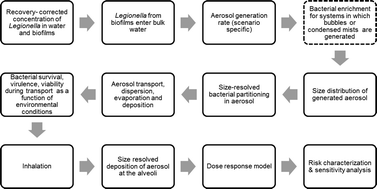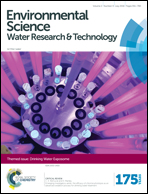Critical review of mathematical approaches for quantitative microbial risk assessment (QMRA) of Legionella in engineered water systems: research gaps and a new framework
Abstract
Legionella has been identified as the responsible agent for two-thirds of waterborne disease outbreaks in the United States from 2011–2012. The prevention of Legionella in engineered systems presents complex challenges for the drinking water industry due to its persistence, resistance to disinfection, and complex microbial ecology. Not all species of Legionella are of concern for human health, however, certain environmental conditions can cause human-virulent species such as L. pneumophila to proliferate, or modulate the distribution of virulence characteristics for relevant strains such that health risks are presented. Quantitative microbial risk assessment (QMRA) is a tool for integrating information on pathogen occurrence, infectivity, and exposure for guiding water quality management strategies. A standardized QMRA approach for Legionella has not been developed, and exposure models are highly varied based on scenario- and site-specific conditions. Detailed discussion of these varied mathematical approaches has been limited, but can aid in identifying research gaps for further QMRA development and public health risk management strategies. A summary of 18 studies that utilize Legionella exposure models for sewage treatment plants, cooling towers, drinking water distribution systems, whirlpool spas, showering, and recreational water scenarios are discussed here. Ten of these studies conducted a full QMRA, and provided human infection estimates. The summarized models utilized Gaussian dispersion, volumetric estimation, occupational hygiene, and aerosol science approaches. Parameters, implications, and limitations of each of these mathematical approaches are discussed, and a QMRA framework to address the identified limitations is proposed. This framework provides a comprehensive overview of key steps within an idealized Legionella QMRA model from exposure to risk characterization, including biofilm impacts, aerosol generation, survival and transport of bacteria within size-resolved water droplets, and interaction with a human receptor.

- This article is part of the themed collection: Drinking Water Exposome

 Please wait while we load your content...
Please wait while we load your content...